Unlike a lot of indie survival games, the main map ofThe Planet Crafteris the same in every playthrough. No matter how many games you start, you can always find resource caves and shipwrecks in the same locations.
This consistency means that players can benefit from memorizingThe Planet Craftermap and the layout of the many biomes. Knowing how to get iridium early can jump-start your game, and a steady source of super alloy is a requirement past the Moss stage. This guide will help players by providing a map of the completed 1.0 version of the game, along with a list of biomes and what to expect from them.

The Map
The Planet Crafterhas an in-game map you may access once you get a few blueprints. This map makes it easier to navigate, but it doesn’t tell you the whole story. Here’s what you need to view and improve the map:
Decode 3-5 Blueprint Microchips
Shows a compass on the HUD; used in most mapping devices
Can view the local area from above
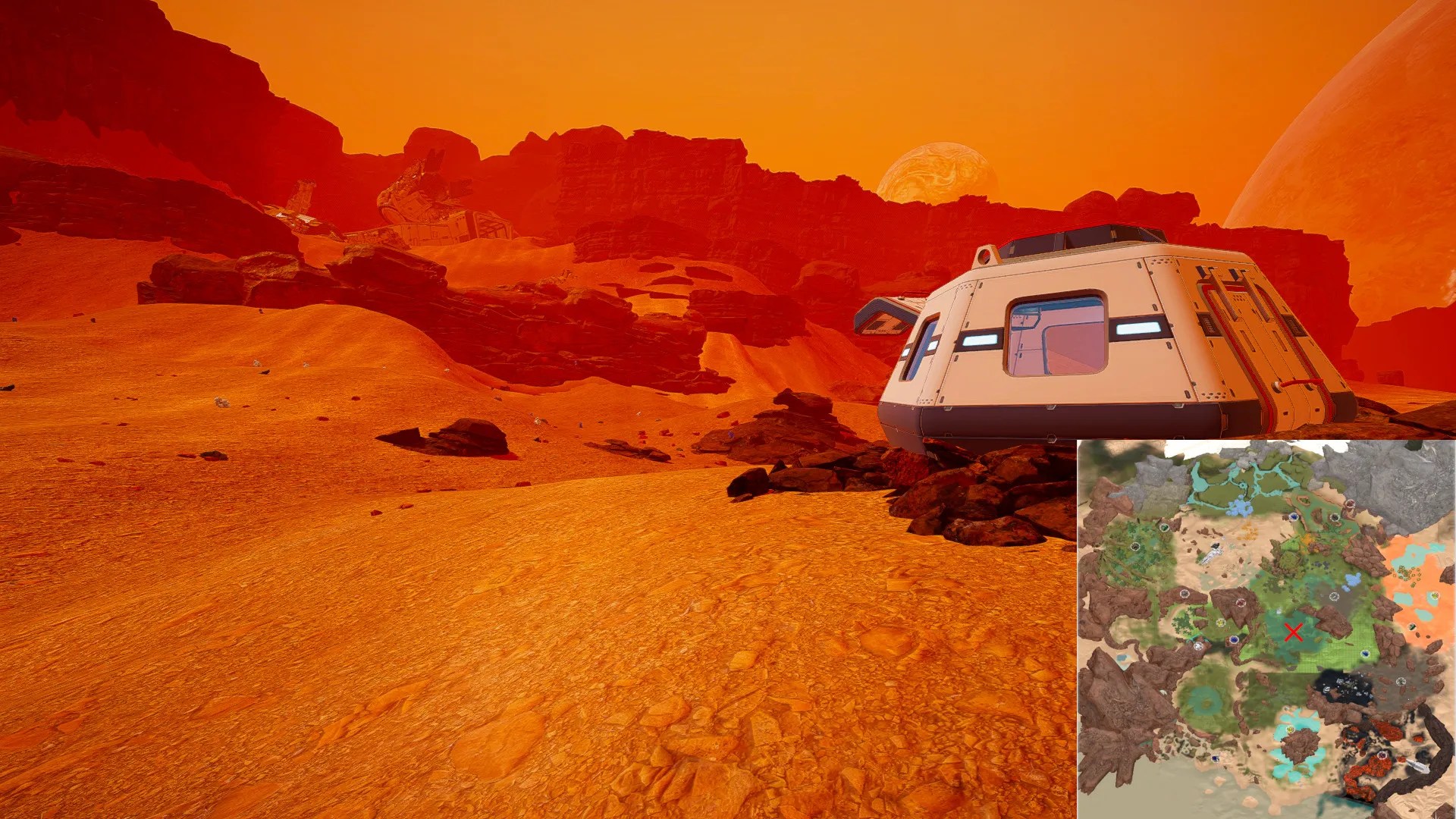
Can zoom out 1 level on the map screen
Can zoom out 3 levels on the map screen
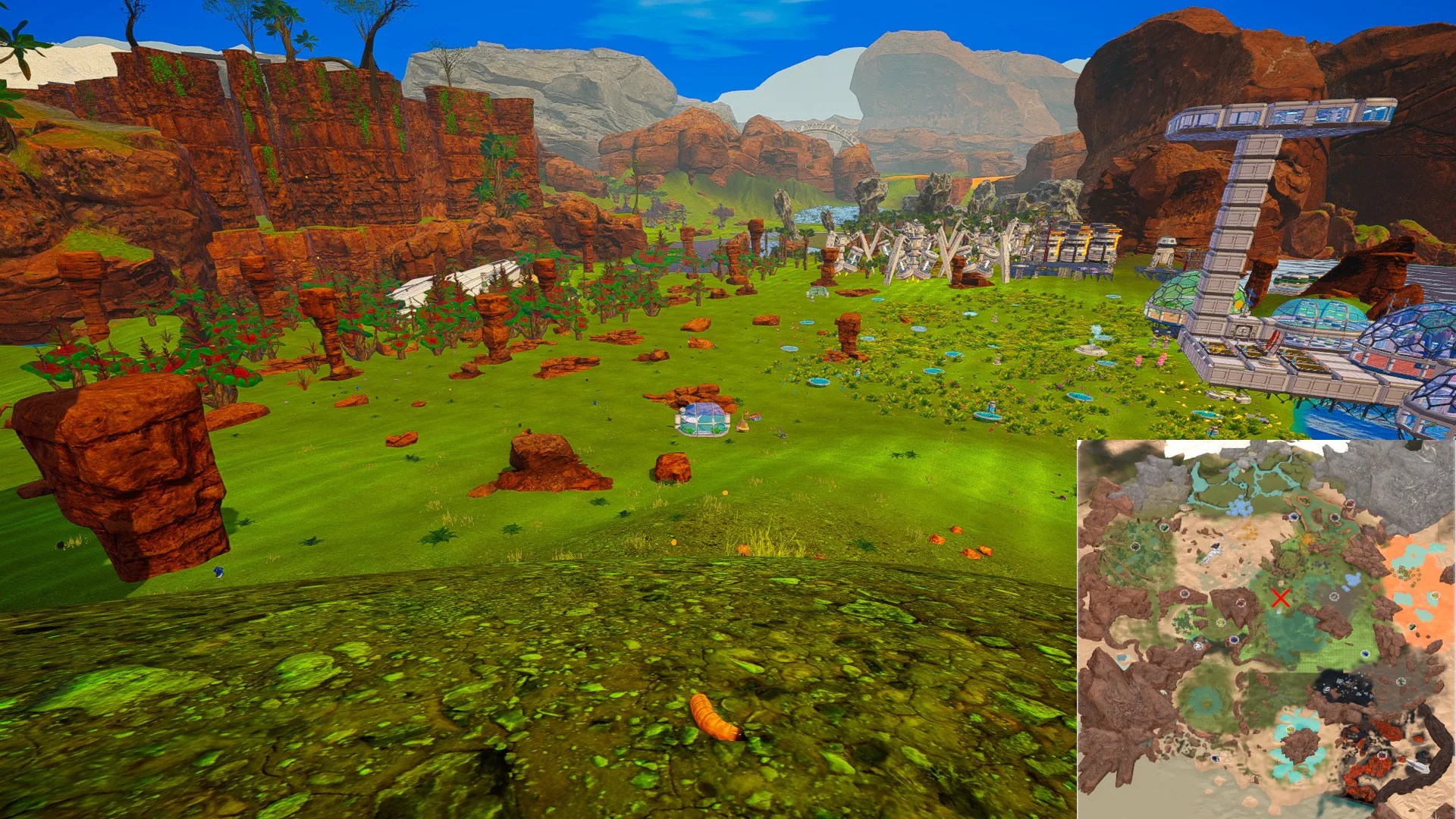
Can zoom out 5 levels on the map screen
Can zoom out 8 levels on the map screen
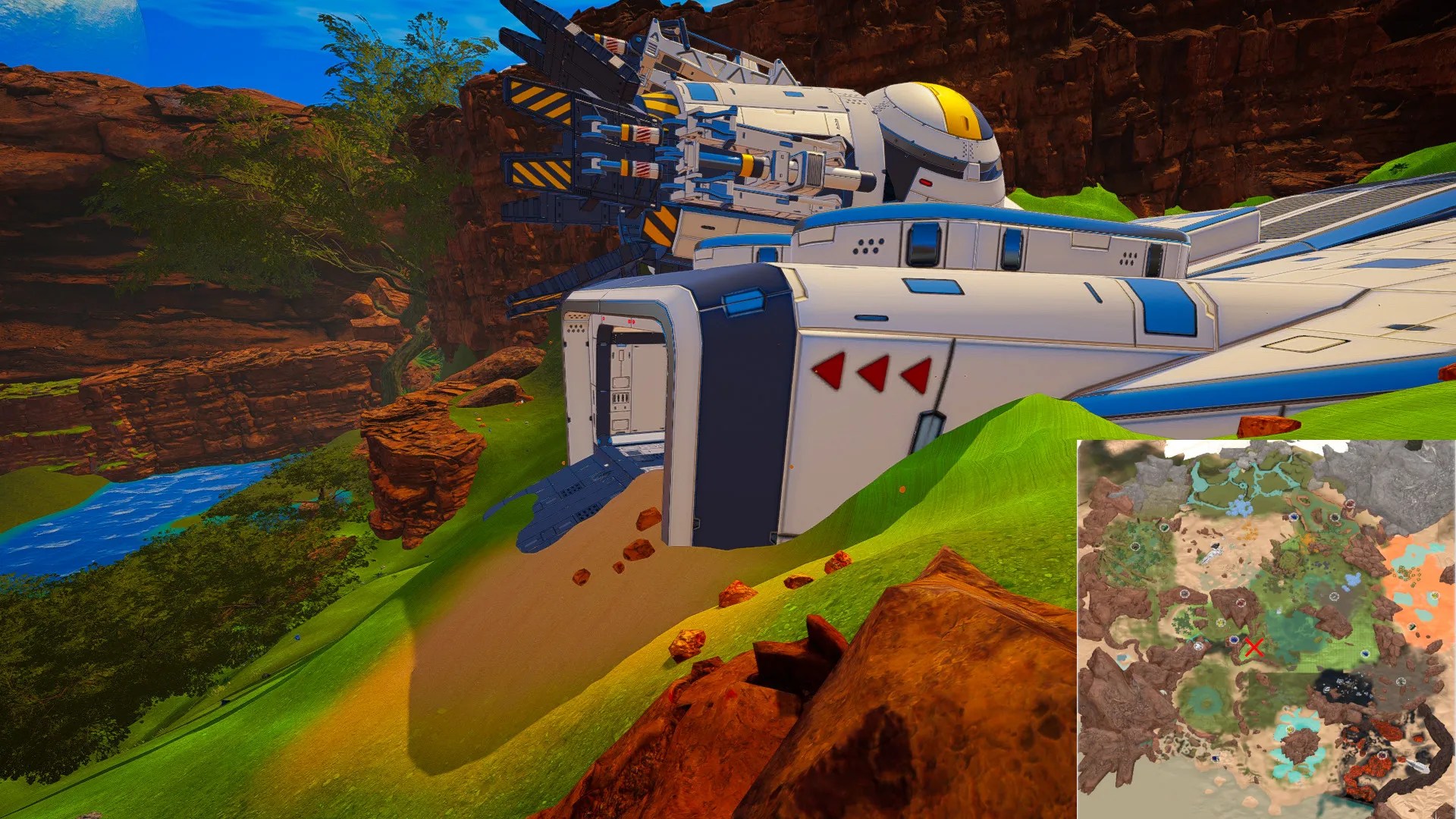
Ore Extractor ores appear as icons on the map
Drone locations appear as icons on the map
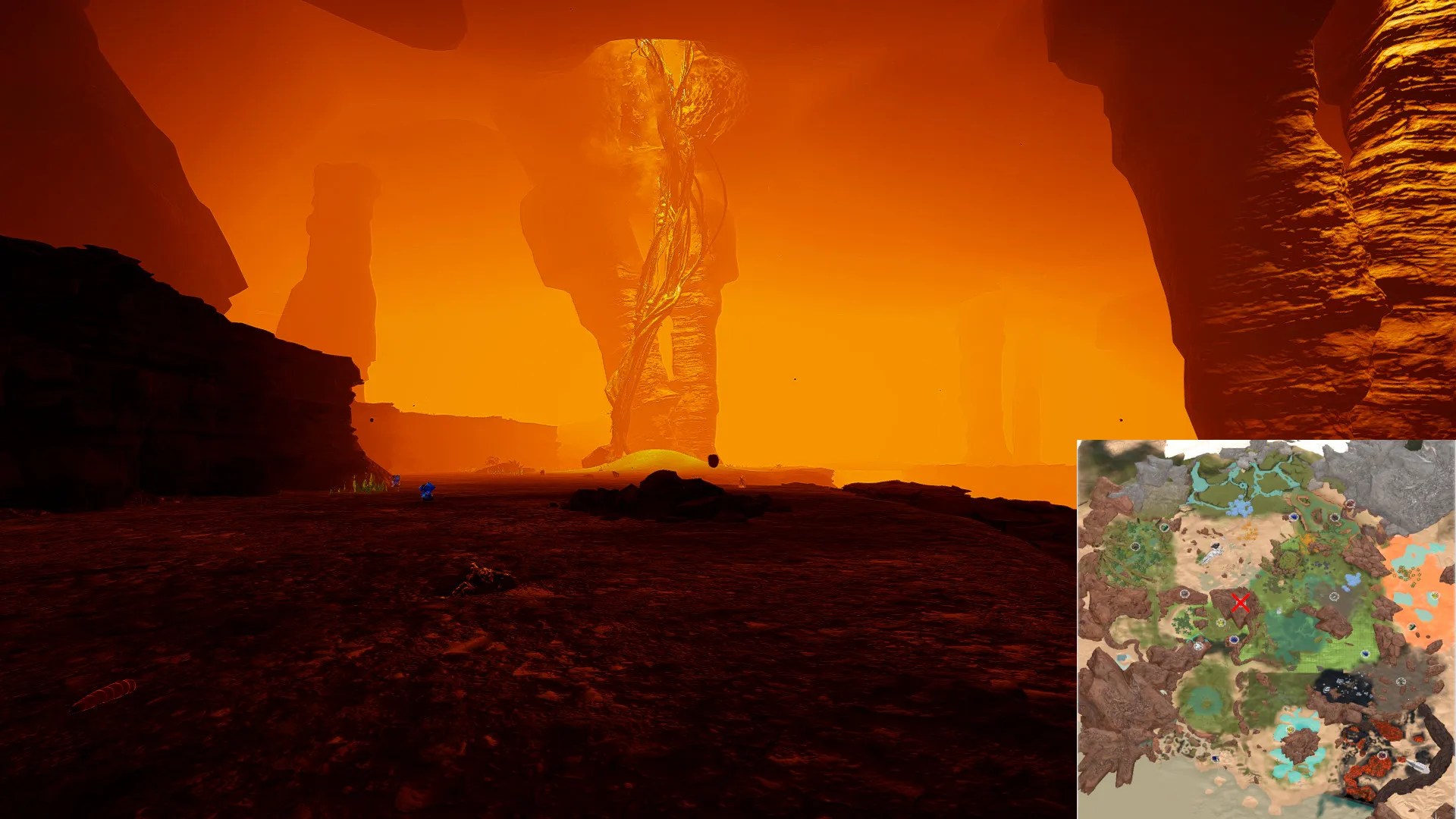
Decode 22-23 Blueprint Microchips
Can see the map from any location (M on keyboard, Back on controller)
Something to note is thatGPS Satellites override each other.If you launch a T4 GPS Satellite, you won’t need to launch any of the earlier versions to get the max zoom level. Also, Blueprint Microchips unlock new blueprints in groups. Which blueprint you get is random when you’re unlocking a group, but you must unlock every blueprint in the tier 1 group before you’re able to get anything from the tier 2 group. This is why the Microchip - Compass might unlock after decoding three, four, or five other Blueprint Microchips.
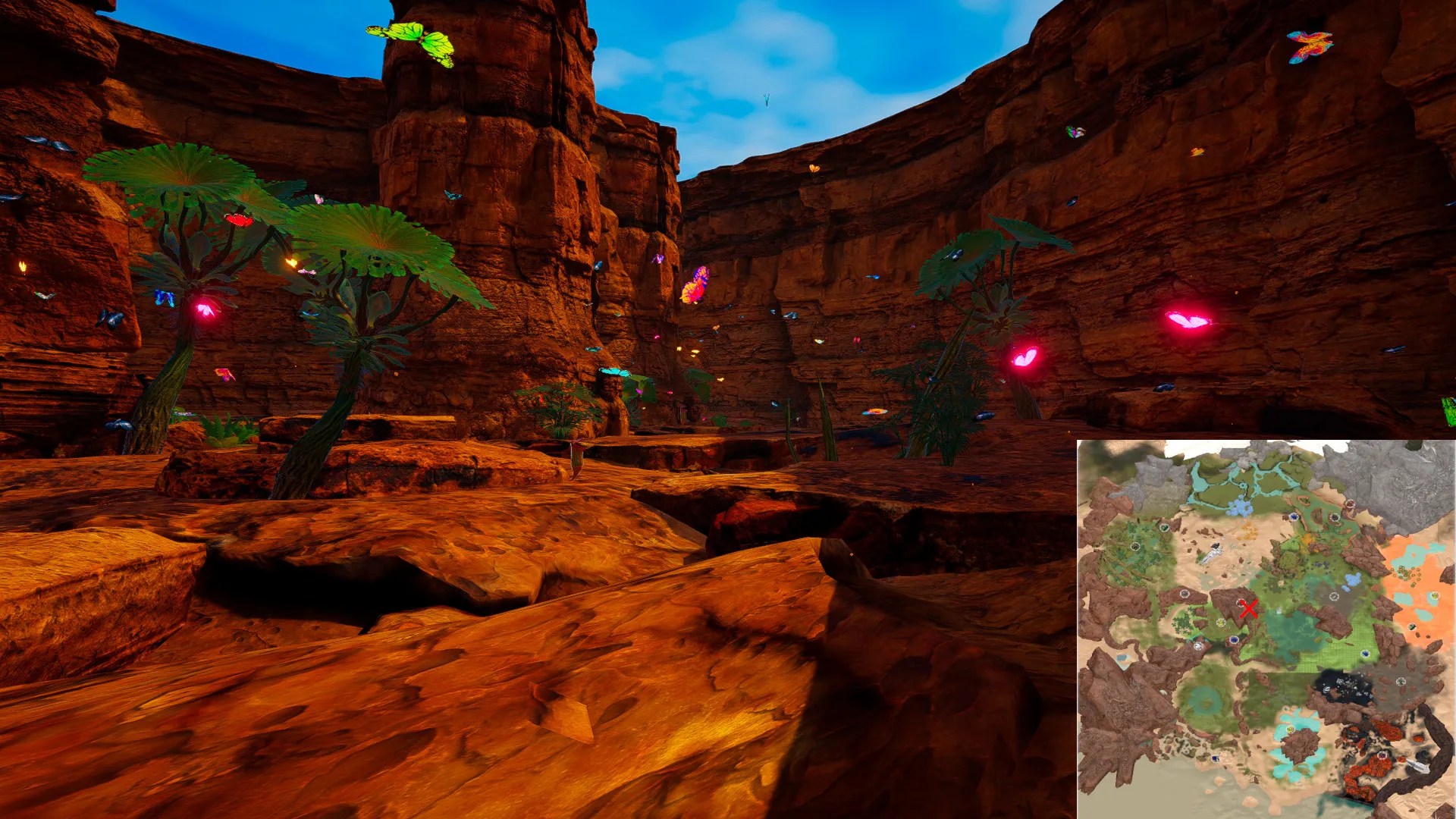
Another thing to know about the map is that italways starts centered on your current location.However, you can use the arrow buttons at the bottom of the screen to move the map. This works for both the map screen and the microchip map.
Coordinates
The last thing to understand is the coordinate system. Even before you get a Microchip - Compass, you can check the lower-left corner of your HUD to see your current coordinates. In order, they tell you:
All three numbers can go negative if you pass the map’s zero point. This zero point is on a rock overlooking the Meteor Field, and may have marked the southeast corner of the map back whenThe Planet Crafterfirst entered early access. Regardless, keep in mind that larger negative numbers are further south and east than smaller or negative numbers.

Starting Valley
If you choosethe standard starting location, this is where you’ll appear. It’s a good location since it’s in the middle of the map, and it’s close to several early-game resources. However, the valley floods during the Lakes phase. If you want to save yourself some trouble, be sure to build your first base on the Central Plateau to the north.
From the valley, you can climb the Steep Hill to the west, and travel to the Cracked Spires to the east. Late in the game, a tree will crack the southern cliffs so that you can visit the Waterfall to the south.
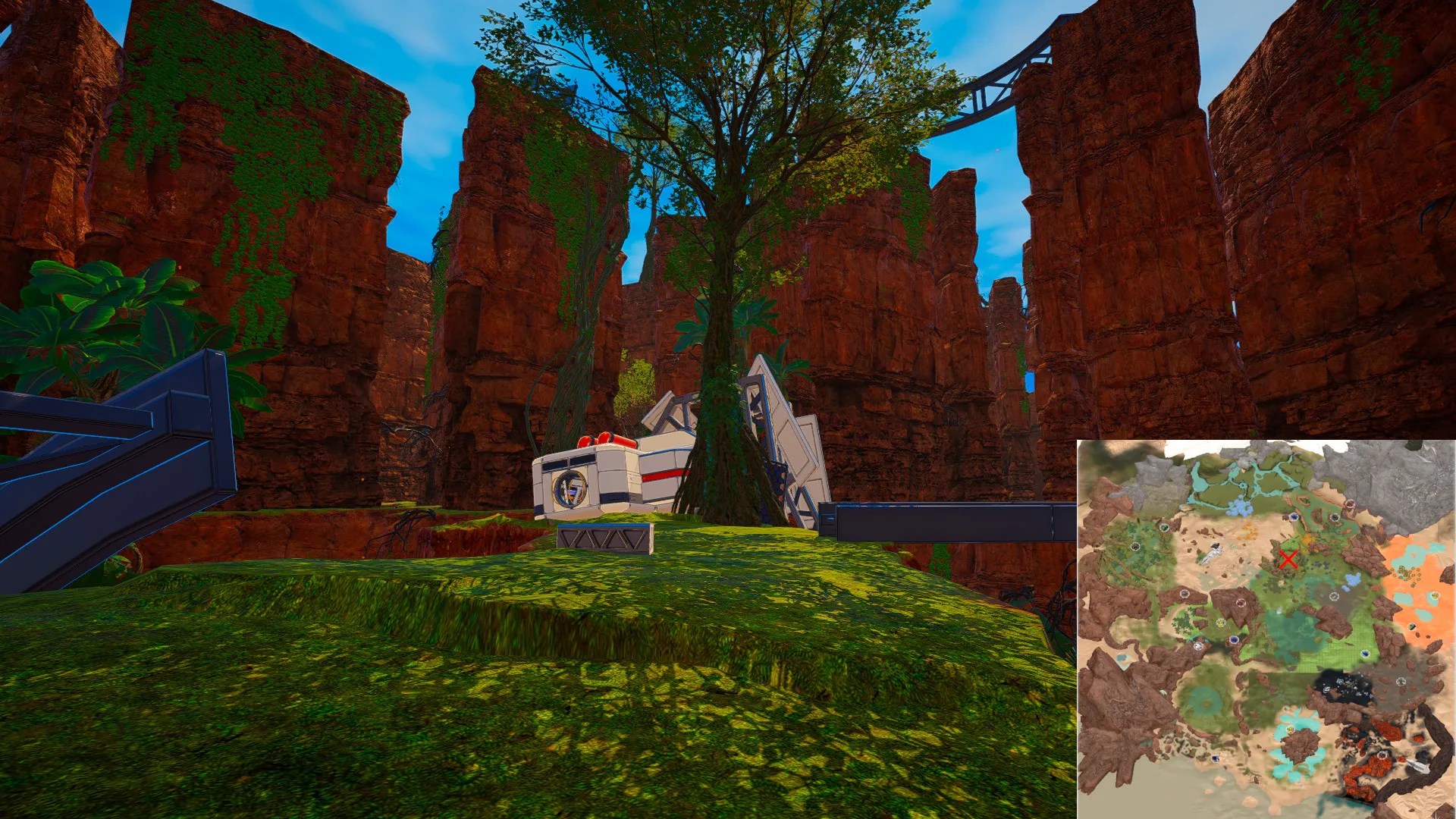
Central Plateau
The Central Plateau is a bit north of the center of the map, but still close to several useful biomes. It’s also a safe place to build your base during every phase of the game.
The Iridium Mine and Dunes Desert are to the west, the Labyrinth Canyons are to the north, the Starting Valley is south, and the Aluminum Hills are to the east.
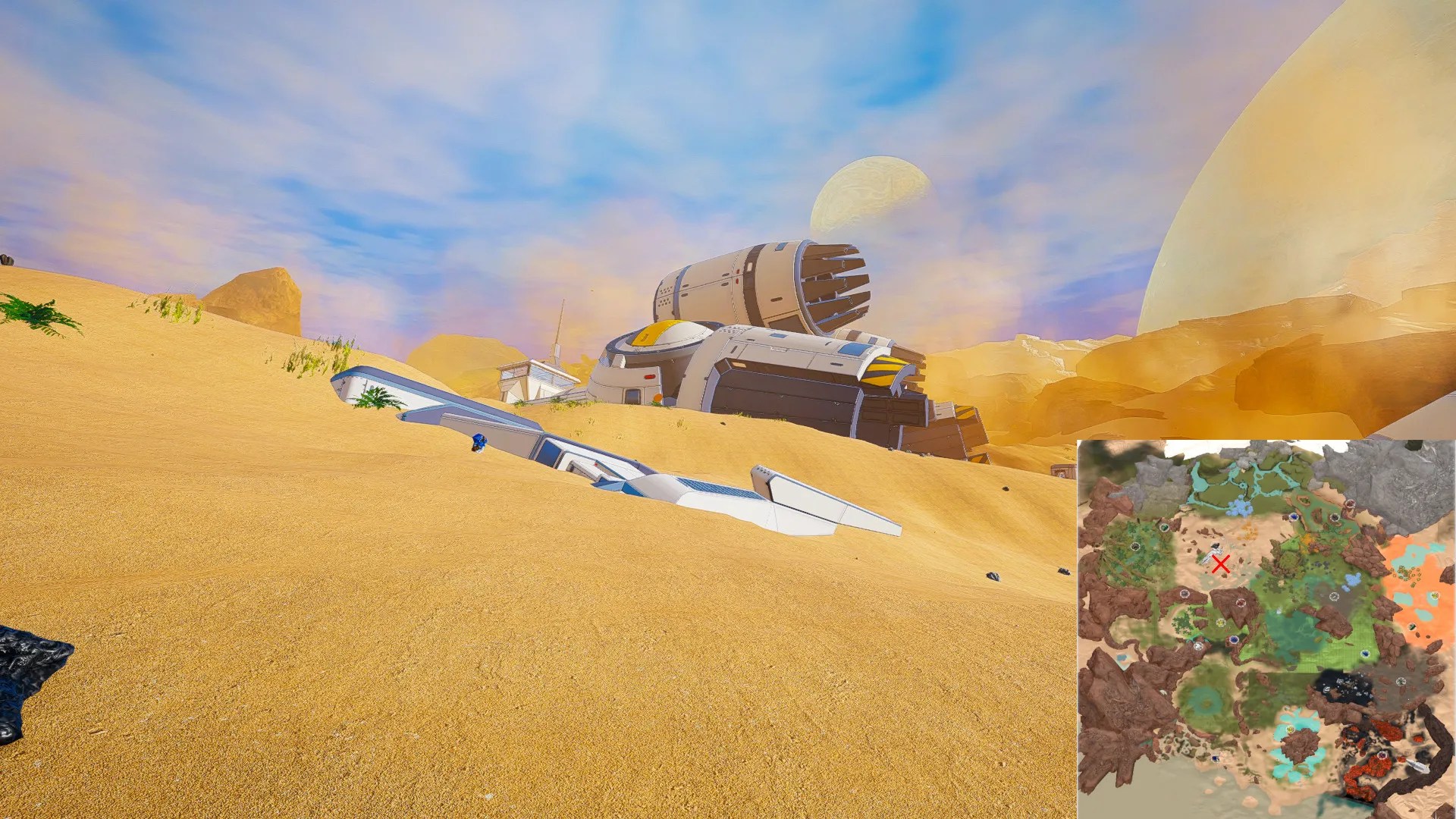
Steep Hill
The Steep Hill is southwest of the Starting Valley. There isn’t much here aside from a large shipwreck, but this wreck has plenty of resources to salvage once you equip your first flashlight. A cave entrance on the Steep Hill leads to the osmium cave that connects to the Sulfur Fields and Zeolite Cave,but ice blocks this entrance.
Iridium Mine
The Iridium Mine is northwest of the Starting Valley and southwest of the Central Plateau. It’s easy to spot, thanks to the sand falls above the entrance.The Iridium Mine is your best source of iridiumthroughout the game (at least if you choose the standard starting location), and it’s a good source of aluminum as well.
The mine has openings to the north and east, and there’s a smaller exit to the southwest that leads to the Sulfur Fields. However, this exit is blocked by ice.
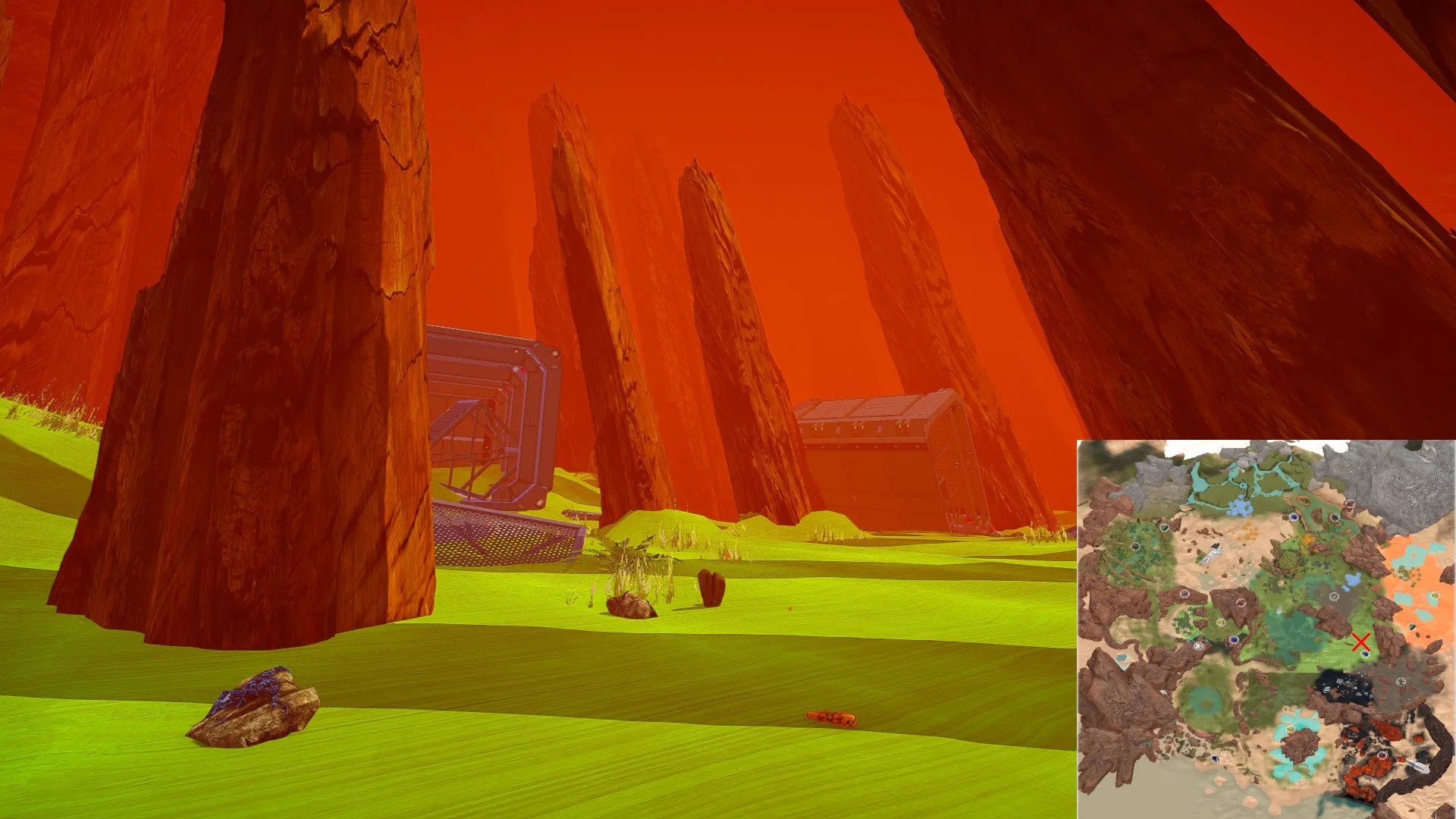
Balcony
The Balcony is a special area you can really only access once the planet reaches the Trees stage of terraformation. At that point, a climbable vine appears in the middle of the Iridium Mine, and you can interact with it to reach the Balcony. You may be able to reach the Balcony before this point by exploiting the jetpack mechanics, but there isn’t much to do here before the Insects stage. At that point,you’ll start finding rare butterfly larvaeyou can’t craft in a DNA Manipulator.
Aluminum Hills
The Aluminum Hills is the only location where you can get aluminum from an Ore Extractor. It also features a small wreck near the middle of the area, and the sky turns dark no matter what time of day it is outside the hills.You can find aluminum to mine here, but there’s not much else.
From the Aluminum Hills, you can travel west to the Central Plateau, north to the Grand Rift, east to the Gate Desert, and south to the Cracked Spires.
Labyrinth Canyons
The Labyrinth Canyons feature a set of vertical mesas that turns the canyons below into a maze of passages. If you reach the north end of the labyrinth, you’ll find a wreck and a way up onto the sides of the mesas. The ledges on the mesas are covered in super alloy, making this a good place to visit once you start needing the material. However, you can’t mine super alloy in the canyons with an Ore Extractor.
The Central Plateau is south of the labyrinth, the Dune Desert is to the west, the Grasslands are to the north, and the Grand Rift is northeast. you may also find an osmium cave north of the labyrinth that connects to the Grand Rift basin, but an ice wall blocks the way at first.
Dune Desert
The Dune Desert is a large, sandy area that never turns fully green, even during the late-game stages. It features one of the largest shipwrecks on the main map, but not much else.
As a large biome, the Dune Desert has a lot of neighbors. To the south, you can enter the Iridium Mine or head through a break in the cliff to reach the Sulfur Fields. This lets you bypass the ice wall between the mine and the fields. West of the desert is the Highlands, northwest are the Rainbow Caves, and north are the Grasslands. Northeast is the Grand Rift (along with an osmium cave that connects to the Grand Rift basin). East are the Labyrinth Canyons and the Central Plateau.
Cracked Spires
The ground below the Cracked Spires turns green during the Moss stage, but you’ll never see a blue sky while you’re here. You can find a few cargo containers with some useful salvage, but this biome isn’t as interesting or useful as its neighbors.
From the Cracked Spires, you’re able to head west to the Starting Valley, northwest to the Aluminum Hills, and northeast to the Gate Desert. There’s a narrow path through the cliffs to the east that leads to the Gate Desert sinkholes, andthere’s an iridium-osmium cavethat leads to the Meteor Field. However, you can’t get all the way through until an ice wall melts.
Sulfur Fields
The Sulfur Fields are covered by a sulfurous mist, even during the later terraformation stages. As the name suggests,this is the best area to find sulfur, and you can use Ore Extractors here to get a limitless supply. It also has a few aluminum deposits you can mine.
You can reach the Sulfur Fields from the Iridium Mine, but only after the ice wall melts. Aside from that, you can head north from the Sulfur Fields to reach the Dune Desert, west to find the Sand Falls, or find a cave to the south to reach an osmium cave. This cave can connect to the Steep Hill and the Zeolite Cave, but ice walls block both exits.
Sand Falls
The Sand Falls are an unusual feature, one that continues from the start of the game to its end. There isn’t much salvage here, but it’s one of the most impressive biomes in the game.
Hidden under the falls is an osmium cave, although you’ll need to wait for an ice block to melt before you can get in. East of the Sand Falls are the Sulfur Fields, and if you hug the north wall, you can find an opening that leads to the Dune Desert. You can also climb up the falls (even before you get a jetpack) to explore the Arches to the west and enter the Zeolite Cave to the south. Unlike other cave openings, you can use this Zeolite Cave entrance at any point in time.
Arches
This biome features a number of unique rock formations, and you can explore a large cargo wreck at the west end of the area. A path leads north from the Arches to the Highlands. The Sand Falls are to the east, andthere’s an osmium-pulsar quartz caveat the southern edge of the biome. This cave connects to the Meteor Crater and the Cenote, at least once the ice melts.
Highlands
This biome starts out as a dry wasteland, but it becomes a thick jungle by the end of the game. You’ll find a uranium cave in the northeast corner if you check under the rocks.
The Dune Desert is east of the Highlands, and the Arches biome is to the south. you may also explore the Rainbow Caves to the north, and west is the hidden Ancient Paradise. You can also find the Super Alloy Cave in the cliff wall to the southeast.
Super Alloy Cave and Ancient City
This cave is the only placewhere you can mine Super Alloywith an Ore Extractor (T2 or T3). If you head to the south end of the cave, you’ll also find a giant closed door that leads down to the Ancient City biome. However, you’ll need a Warden Key from the Mushroom River ruins if you want to get inside.
The entrance to the Super Alloy Cave is in the southern cliff at about the point where the Dune Desert becomes the Highlands.
Ancient Paradise
The Ancient Paradise is the third Warden ruin inThe Planet Crafter. you’re able to explore the first two at the start of the game, but to reach the Paradise, you’ll need to place three Warden Keys in an altar on the west side of the Highlands and then wait for an ice wall to melt.
Grand Rift
The Grand Rift is a large canyon that features several mesas. During the Trees stage of terraformation, vines will appear that allow you to reach the tops of the mesas, but you’re able to reach them earlier by building platform bridges or tall staircases.
The Grand Rift features an iridium cave in the northeast, and an osmium cave in the west wall. This cave connects directly to the northeast corner of the Dune Desert once the ice melts. you’re able to also visit the Grasslands by heading northwest, the Gate Desert by heading east, and the Central Plateau by going south.
Gate Desert
The main feature of the Gate Desert is a massive stargate, half-buried in the sand. You can explore the gate wreck by finding a door at the north end of the gate, but keep in mind that it floods during the middle stages of the game. The desert also features four sinkholes south of the gate, three of which eventually flood. The northeast sinkhole holds an ice-blocked osmium-pulsar quartz cave, and the southwest sinkhole that doesn’t floodfeatures a uranium cave.
You can reach the Aluminum Hills and Cracked Spires by heading west, the Grand Rift by going northwest, and the Wasteland by heading south. You can keep going east from the Gate Desert, but there’s nothing in that direction except the edge of the map.
Wasteland
The Wasteland is dreary and gray no matter what stage of terraformation you’ve reached. You can find the broken machines left by a previous terraformer in the center of the Wasteland, and one of the living compartments leads toan underground bunker full of salvage.
You can go north from the Wasteland to reach the Gate Desert, west to find the Meteor Field, and south to explore the Volcano. There’s also an osmium-iridium cave between the Wasteland and the Meteor Field that leads to the Broken Spires, at least once the ice melts.
Meteor Field
The Meteor Field is a strange place full of shining black-and-white rocks, and the sky is always dark. The field is a great place to find rare minerals, including osmium, zeolite, and pulsar quartz. However,Ore Extractors in the Meteor Field only find common minerals.
Solid cliffs box in the Meteor FIeld to the north and south, but you’re able to go west to reach the Waterfall and east to enter the Wasteland. You can also find one of two entrances to the Mushroom River in the southwest corner.
Waterfall
During the early stages ofThe Planet Crafter, this massive rock stands still and silent. However, after the Lakes stage, water will start pouring down and filling pools on every side. You can find a cave behind the main waterfall, and there’s a mostly-buried wreck in a hill south of the Waterfall.
The Waterfall is another large area with a lot of neighbors. You can go northeast to enter the Meteor Field, and southeast to reach the Volcano. The Beach is to the south, the Cascades are southwest, and the Meteor Crater is northwest. Finally, an entrance to the Mushroom River is north of the main waterfall, and eventually a tree will crack the northern cliff to create a shortcut to the Starting Valley.
Mushroom River
The Mushroom River is a strange cavern full of glowing pink water, and the mushroom trees down here are present even at the start of the game. You’ll findthe first Warden’s Key on an altar beneath a large mushroom, and you can place it on a second altar (also in the Mushroom River biome) to explore the first Warden ruin.
Volcano
Lava is always present in the Volcano biome, but it only really starts flowing after you add some heat to the planet. The Volcano biome isthe only place where you can mine obsidian, both by hand and with Ore Extractors. You can also find a large wreck in the southeast corner of the area. West of the Volcano are the Waterfall and Beach biomes. To the north is the Wasteland.
Beach
The southern edge of the map starts out as a vast desert, but as water returns to the planet, this desert becomes an ocean that stretches off to the horizon (and the map boundary). At the edge of the ocean, you’ll find the Beach biome.
The ocean covers the south edge of the map, but the Beach biome only covers the area south of the Waterfall. To the west of the Beach is the Cascades biome, and to the east is the Volcano.
Meteor Crater
Not to be confused with the Meteor Field, the Meteor Crater is what’s left of a large meteor impact. Early in the game, the Meteor Crater is full of dust, and you can find the iridium meteor (which holds Iridium Ore and Iridium Rods) in the center. Later, the dust settles and the meteor vanishes, leaving behind a crater lake.
North of the Meteor Crater is the Zeolite Cave, along with a smaller osmium-pulsar quartz cave that connects to the Arches and the Cenote after the ice melts. To the west is the Cenote, to the south are the Cascades, and to the east is the Waterfall.
Zeolite Cave
This is a large cave that connects several other biomes, and it’sthe only place where Ore Extractors can collect zeolite. From the main chamber of the Zeolite Cave, you may go west to Arches and Sand Falls, south to the Meteor Crater, and east to an osmium cave that has exits to the Sulfur Fields and the Steep Hill. The connection to the osmium cave has ice blocking the way, but the other two exits are always open.
Cascades
The Cascades biome was added toThe Planet Crafteras part of the 1.0 release. The area is prettyonce the Terraformation Index gets high enough, but there aren’t many resources to find here. The Cascades are south of the Meteor Crater and west of the Waterfall and Beach.
Cenote
The Cenote (seh-NO-tay) is a sinkhole with a pool of groundwater at the base. An ice plug blocks the way down until late in the game, but once it melts, you can find the last of the Warden ruins. The only way to reach the Cenote is from the Meteor Crater to the east and from the osmium-pulsar quartz cave that connects the Meteor Crater to the Arches biome.
Grasslands/Ice Fields
This region has two names, depending on the stage of the game you’re in. At first, this area is the Ice Fields, with large ice rocks jutting out of the ground. You’ll begin in this areaif you choose “Ice Fields” as your starting location. Later on, the ice melts, and the biome becomes the Grasslands.
From the Grasslands, you can head southeast to the Grand Rift, south to the Dune Desert, and west to the Rainbow Caves.
Rainbow Caves
The Rainbow Caves holdall five colors of quartz, each one in its own cave. Some quartz types appear in multiple caves, but each cave only holds one type of quartz. Most caves are down by the canyon river, but a few caves are above the canyon.
The Rainbow Caves connect the Grasslands to the Highlands. You can also find an entrance to the uranium cave in the Highlands in the canyon.